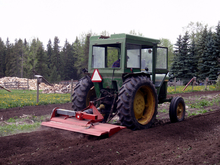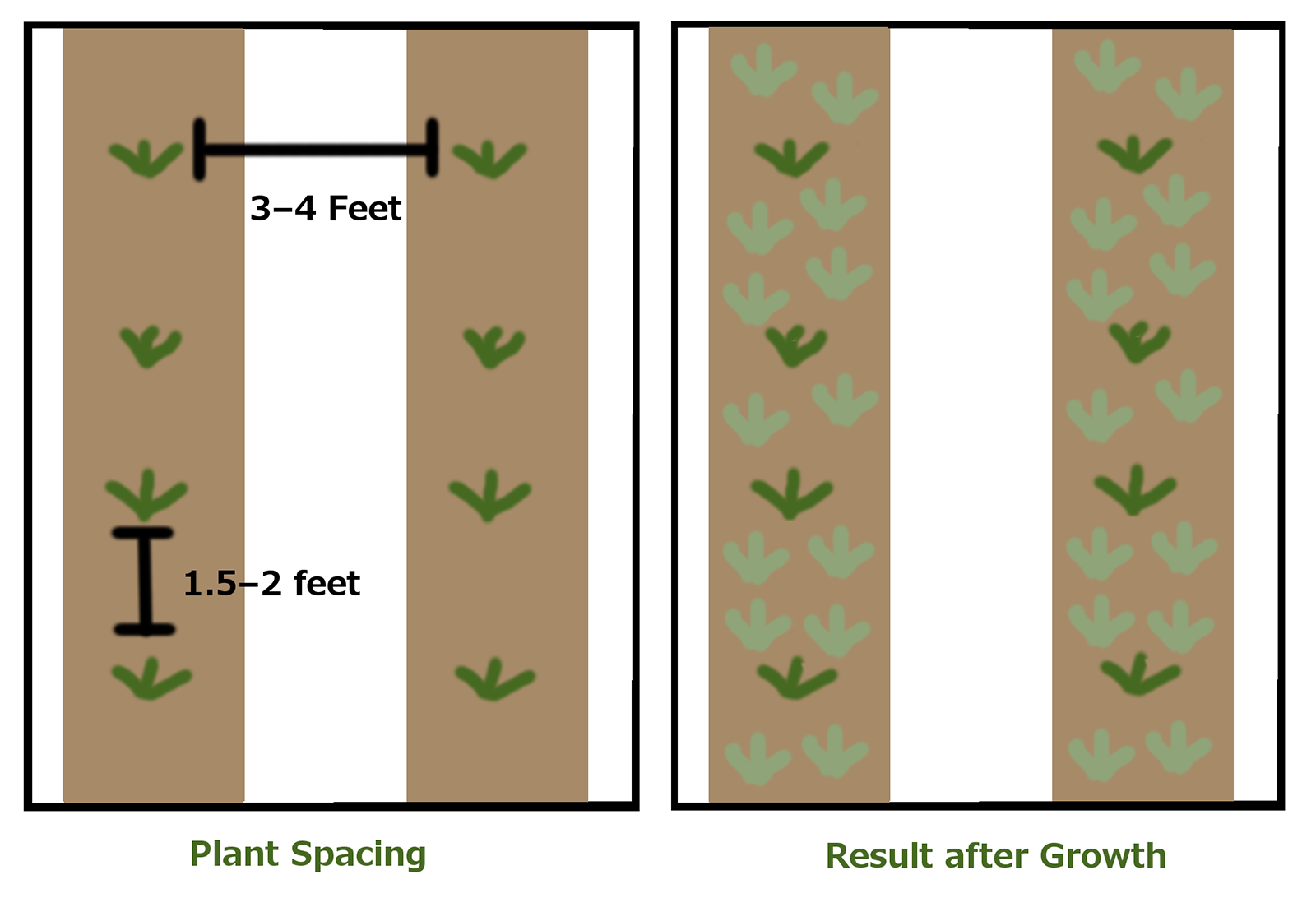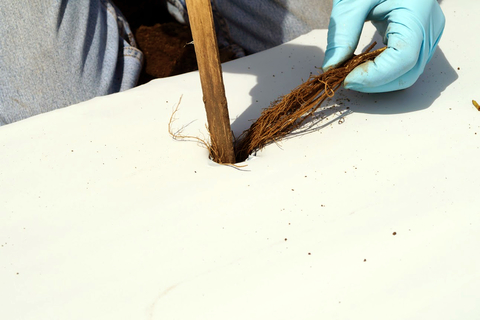Key points
- Choose a site with good soil quality and drainage for your strawberry field.
- Eliminate perennial weeds the year before planting, to reduce future weed problems.
- Take soil samples and amend the soil as necessary before planting.
- Plant according to established recommendations, using proper spacing and equipment.
- Install irrigation beforehand so that the new plants can be watered right away.
Tasks for the planting year in June-bearing strawberries
| What to do | When to do it |
|---|---|
| Plan project | Jan. through Feb. |
| Order plants | Jan. through March |
| Prepare site with proper tillage | April through May |
| Install drip irrigation (if desired) | April through May |
| Assess nutrient needs, fertilize if needed | May through June |
| Plant dormant transplants | May through June |
| Pre-emergence herbicide application | May and July |
| Water as needed | April through Sept. |
| Control weeds (mechanical, hand-weed) | April through Sept. |
| Apply fall herbicide if needed | November |
| Apply winter mulch | December |
Site selection
Select the site for a new strawberry field at least one year in advance in order to prepare it for planting.
Site requirements include:
- Full sunlight.
- Fairly level ground with an ideal slope of 2-3% to allow good air circulation.
- Well-drained loam or sandy loam soil, to maintain plant vigor and reduce disease.
- Access to irrigation water.
Avoid planting strawberries in low-lying areas where cold air can settle, creating frost pockets and damaging flowers during bloom.
A southern exposure will result in an earlier bloom, while a northern exposure will delay flowering, an advantage in an area of late spring frosts.
Monitor the site for a year, if possible, to determine whether water ever stands after a rain, what types of weeds are present, how the sun moves across the site, and so on.
Take soil samples from the field, especially if it was not previously in crop production, to see if the soil is suitable for strawberry production.
Wait at least three years before planting strawberries in fields where potatoes, tomatoes, peppers, or raspberries were grown previously, to reduce the chance of Verticillium wilt disease.
Other site-selection considerations: If the field will be U-Pick, then it should be in close proximity to an open area for parking. Fields adjacent to busy roads may be at risk of looting berries, so consider having space between the road and the field.
Preparing for planting
Preparations before planting should include soil amendment if necessary, eliminating perennial weeds, purchasing plants, and installing any necessary drainage tile or underground irrigation pipe.
Control weeds as much as possible before planting to reduce weed competition with the new plants. Weed control is especially important if many perennial weeds are present, like thistles and quackgrass. Do not let weeds go to seed, as this will dramatically increase the weed pressure in the field.
Many techniques can be used to achieve weed control in strawberries in the year prior to planting. These include:
- Solarization.
- Aggressive cover crops like winter rye and sorghum-sudangrass.
- Mowing.
- Flaming or propane weeding.
- Pre-plant harrowing of a prepared field right before planting.
- Herbicides - consult herbicide labels to avoid potential carry-over problems for the new strawberry planting.
See Weed management in strawberries.
Test the soil
Take soil samples in the field a year before planting and have them tested at the UMN Soil Testing Laboratory. Pay close attention to the soil pH on the soil test report. If the soil pH is below 5.5 or above 7.5, apply lime or sulfur amendments respectively to alter the pH as needed.
Since the soil may take up to a year to change after amendments, do this in the year before planting.
Order strawberry plants from a reputable nursery that are free from insects, viruses, and fungal diseases. The plants may come as dormant crowns or small spring-dug potted plants (“plugs”). Order the winter before planting to ensure the availability of desired varieties.
If the plants arrive before you are ready to plant, you may store dormant bare-root plants in a cool, fairly humid area for a few weeks before planting. Spring-dug plants must be planted as soon as possible after arrival.
Planting
Good planting technique allows for better plant establishment, which can positively impact yield and plant health for the lifespan of the field.
Soak the plants in water for a few hours prior to planting. Trim the roots to 4 to 5 inches immediately before planting.
Equipment and supplies needed for planting:
- Mechanical transplanter or hand tools for planting
- Cultivator attachments (s-tine or other)
- Rototiller or multivator
Strawberries are planted in early spring to ensure good runner plant development, which leads to higher productivity the following season. The later the planting date, the lower the expected yield the next year. Don't plant after August 1 as there is not enough time for plant growth prior to freezing temperatures.
The number of plants needed per acre depends upon the spacing system used.
The main planting system used for June-bearing varieties is called a “matted row” system.
Space plants 1½ to 2 feet apart in rows spaced 3 to 4 feet apart. The space between rows can be determined, in part, by the width of the equipment and the needs of the pickers.
Let the runners develop until the row is 1 to 1½ feet wide.
Depending on the row spacing and plant spacing, an acre of June-bearing strawberries requires 5,445 to 9,680 plants.
This spacing allows for good light penetration into the plant canopy which eases weed control, harvest, and reduces fruit rot and foliage diseases.
To plant, till the soil and then create a 7- to 8-inch-deep furrow in the rows. Place the roots in the furrow so that the middle of the crown is level with the soil surface. Avoid laying down the roots horizontally in a “J.” Fill in the soil around the plants. If available, a mechanical transplanter aids in this process.
Plant spacing and plants per acre for June-bearing strawberries
| In row spacing | Between row spacing | Plants per acre |
|---|---|---|
| 1.5 ft. | 3 ft. | 9,680 |
| 1.5 ft. | 3.5 ft. | 8,296 |
| 1.5 ft. | 4 ft. | 7,260 |
| 2 ft. | 3 ft. | 7,260 |
| 2 ft. | 3.5 ft. | 6,223 |
| 2 ft. | 4 ft. | 5,445 |
Most strawberry fields are planted with mechanical transplanters. Then, one person will walk behind the planter to double-check the plants for depth after the soil is mounded around the roots.
Planting strawberry crowns completely by hand is highly labor-intensive and only feasible on very small fields. If you are unable to purchase a mechanical transplanter, try to find a transplanter to rent or borrow.
One Minnesota strawberry grower designed and built a “planting toboggan” to enable more efficient strawberry planting for his workers without using a mechanical transplanter. This video shows how it works:
Day-neutral strawberries have been found to yield best when planted in double rows on plastic mulch, with plants staggered at 12-18 inches apart.
Form raised bed rows, and lay drip tape and then plastic mulch on the rows. Cut or burn holes in the plastic where the plants will be planted. As with June-bearing strawberries, they must be planted so that the roots extend vertically into the soil and the middle of the crown is level with the soil surface. A wooden stake or ruler can be used to help push the roots into the soil.
Straw can also be used as mulch in place of plastic, but UMN research has found that yields are reduced when growing on straw.
More information on establishing day-neutral strawberries.
Caring for new plantings
If some plants do not begin growing after a week, or if any plants die after planting, replace them with new plants as soon as possible. It is important to have a 100% stand in the first year.
To encourage the growth of the plant canopy after planting, remove all flowers on June-bearing strawberry plants during the first season. Day-neutral strawberry plants should have flowers removed for the first 4 weeks after planting. Removing flowers is a significant labor cost, but is necessary during these time periods.
Water and weed
Strawberry plants are shallow-rooted, with most of the root system in the top 6 to 12 inches of soil. This underscores the need for irrigation. Proper irrigation will improve subsequent fruit quality and yield.
Effective weed control is essential during the first season to reduce the number of weeds the following year and maintain yield. Since the roots are very shallow and the plants are small, they do not compete well with weeds.
Fertilize
Nitrogen, phosphorus, potassium, and other soil nutrients are required for vigorous crown and runner development. Soil tests will identify the nutrient needs. In general, phosphorus, potassium, and part of the nitrogen should be applied at or before planting. Apply nitrogen again in August during runner plant production.
Keep in mind, however, that strawberry growers tend to overemphasize the importance of fertilizers and underestimate the importance of water. Yields are more frequently reduced from lack of water, poor soil drainage, and poor soil physical properties than from a lack of fertilizer.
Reviewed in 2021




